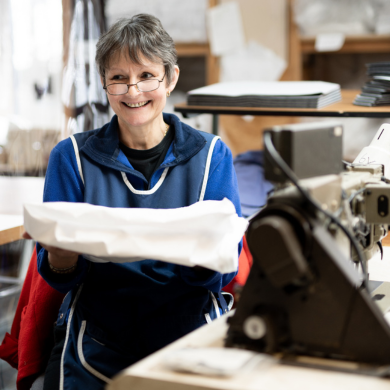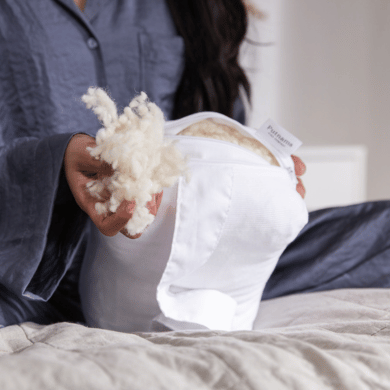
Bouncing Back - A Guide to Prostate Surgery Recovery.
Whilst the prospect of prostate surgery may seem daunting, it is important to remember that you're certainly not alone on this journey. Due to recent awareness campaigns over the passed 20 years between 1500 and 2000 radical prostatectomies are performed every year.
Prostate cancer is the most commonly diagnosed cancers in men in the UK.
This has been helped with high profile people such as Rod Stewart, Stephen Fry and King Charles all raising awareness and in turn saving lives. Increasingly the awareness campaigns of the NHS and Prostate Cancer UK have managed to remove the taboo previously felt by previous generations.
What are the signs of Prostate Cancer?
It is often very difficult to detect in the early stages however the following are signs (NHS symptoms) that you should ask your GP for a checkup;
- Experiencing an increased urge to urinate, particularly throughout the night, can be a common symptom. You might also find yourself needing to get to the bathroom urgently and without much notice.
- Starting to urinate might become more challenging, with a certain level of hesitancy not uncommon. You may also notice that it takes longer than usual to finish urinating, with a degree of straining potentially necessary.
- The flow of your urine might become weaker, and you may have a lingering sensation that your bladder isn't entirely empty even after going to the toilet.
- Lastly be conscious of blood in your urine or semen.
Please be aware the above symptoms may not always indicate the presence of prostate cancer as many men's prostates enlarge with age and can cause benign prostate enlargement. (BPE)
However, it is always prudent to seek a GP appointment should you be experiencing one or more of the above symptoms. Or if you fall into the high risk categories. Check your risk today with the Prostate Cancer Risk Checker in 30 seconds.
Planning your homecoming after prostate surgery
As with all successful surgery the recovery period is vital and should be planned meticulously. This is something you can do beforehand so that your are ready and able to make a full recovery.
Your home should be a sanctuary of comfort as you recover from prostate surgery. Here are some tips to prepare your home:
- Create a Comfortable Safe Space: Ensure that your living area is equipped with comfortable seating and bedding. Consider using Putnams' comfort solutions, designed to provide optimal support and relief.
- Organize Your Medications: Have a designated area for your medications and keep track of your dosages and schedules. Ensure repeat prescriptions are set up and consider a prescription delivery service which will remove a recurrent headache of having to go to the pharmacy.
- Prepare Easy-to-Digest Meals: Stock your fridge with nutritious, easy-to-prepare meals. Hydration is also crucial, so have water and healthy drinks within easy reach. Set up an online shop repeat delivery for the first 4-6 weeks at least. Don't be alarmed if you have a loss of appetite in the early days after surgery this is normal.
Regaining Strength: Exercises After Prostate Surgery
Recovery from any type of prostate surgery isn't about how quickly you recover but about who well you recover. Most guidance will tell you, 4 weeks for light exercise but don't lift heavy weights for at least 6 weeks.
As with most post op recovery the reality can be quite different, so it is important to listen to your body and respond accordingly.
Why exercise?
Exercise after prostate surgery is crucial for several reasons:
- Strengthens pelvic floor muscles: These muscles are often weakened after surgery, leading to issues like incontinence. Regular exercise can help strengthen these muscles and improve bladder control.
- Improves circulation: Exercise helps to increase blood flow, which aids in the healing process.
- Boosts mood and energy levels: Regular physical activity can help reduce feelings of fatigue and improve overall mood.
Recommended Exercises Post Prostate Surgery
Kegel exercises target the pelvic floor muscles, helping you regain bladder control after surgery. Here's how to do them:
- Identify your pelvic floor muscles. These are the muscles you use to stop urinating mid-stream.
- Tighten these muscles and hold for five seconds, then relax for five seconds. (UCLA Kegel Techniques)
- Repeat this exercise ten times, three times a day.
Always remember to keep breathing, do not push down - squeeze and do not tighten stomach muscles. Target 10-20 Kegel exercises 3 of 4 times a day.
Walking is a low-impact exercise that can help increase circulation, improve cardiovascular health, and boost your mood. Start with short, leisurely walks and gradually increase distance and pace as your strength improves. Take it slow and take time to stop and smell the roses.
Gentle Yoga can help improve flexibility, strength, and balance. Gentle poses, such as the cat-cow pose or child's pose, can be particularly beneficial. Always ensure you're comfortable and not straining yourself. Nice 'n' easy.
Leg raises can help strengthen your core and pelvic muscles. Start by lying on your back, then slowly lift one leg at a time. Hold for a few seconds, then lower it back down. Repeat with the other leg. Remember, it's not about how quickly you recover, but how well.
Embracing Patience and Positivity
Recovery takes time, so be patient with yourself.
Stay positive, take one day at a time, and remember that each day brings you closer to full recovery.
A strong support system is crucial during your recovery period. Lean on your family and friends for emotional support.
Remember, it's okay to ask for help when you need it and remember you are not on this journey alone!
Support Prostate Cancer UK - Your donation can save lives.
















Leave a comment